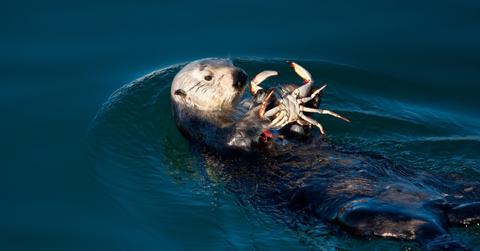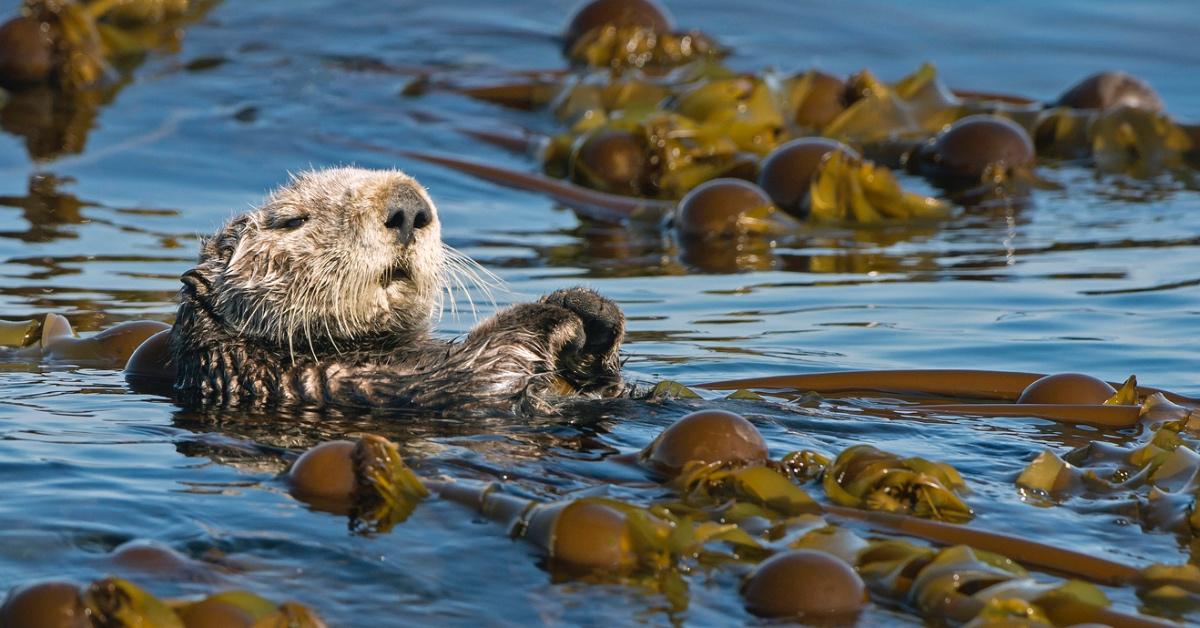Sea Otters Are Helping Slow Erosion in California by Snacking on Striped Shore Crabs
Published Feb. 1 2024, 12:43 p.m. ET

Like most things, climate change has an enormous impact on our oceans. According to the Environmental Protection Agency (EPA), climate change can increase erosion and damage water quality. While many have resorted to soil conservation methods to try and prevent erosion, researchers have discovered a natural remedy making an impact.
In a study published on Jan. 31, 2024, in the journal Nature, researchers reveal that sea otters have been curbing the effects of erosion in California marshlands thanks to their unique diets. Keep reading for everything you need to know about these surprising waterway heroes.

Study finds sea otters are curbing erosion via their diets, which include striped shore crabs.
In a study published in the journal Nature, scientists used "observational and experimental data" to uncover that the presence of sea otters in U.S. estuaries has slowed or stopped marsh erosion.
The study's primary subjects were sea otters from five different marsh areas, including near Monterey, Calif., and Alaska. According to the Northwest Power and Conservation Council, sea otter populations had been extremely low thanks to the fur trade. They slowly made a comeback after hunting bans and reintroduction programs.
Using data from the 1930s onward, researchers analyzed erosion levels before and after sea otter populations began to bounce back. Part of their study involved adding fencing to certain creek areas to compare the erosion levels with and without sea otter interference.
The reason that sea otters can slow marsh erosion is due to their diet. According to the Alaska Department of Fish and Game, sea otters will happily eat all assortments of marine creatures, especially those with hard shells like striped shore crabs.

Striped shore crabs reside primarily in tide pools or burrows they dig into marshes, per Morro Bay National Estuary Program. Striped shore crabs are not invasive species, but their burrowing loosens grasses that would otherwise protect the marsh from erosion.
Brent Hughes, co-author of the study and a Sonoma State University marine ecologist, spoke to the Associated Press to describe the damage that striped shore crabs have been doing to places like Monterey and how sea otters have been able to make such a positive impact.
He noted that crabs can turn banks "into Swiss cheese," but that, thankfully, sea otters have been a big help. "They don't completely reverse erosion, but slow it down to natural levels."
Sea otters aren't the only animals that help the environment.
According to the U.S. Fish and Wildlife Service, sea otters aren't the only creatures doing their part to help the environment. Beavers are also known for improving habitats through their ability to build dams. After beavers build their dams, they use them to create ponds of water that provide a place to store extra sticks and entrances to their homes, per the University of North Georgia.
Not only do beaver ponds create pockets of cold water in the summer, thus helping certain fish species thrive in rapidly heating temperatures, but they also store groundwater that's necessary for vegetation to thrive.
Humans must continue to protect these innovative, adorable species for the greater good of the environment.